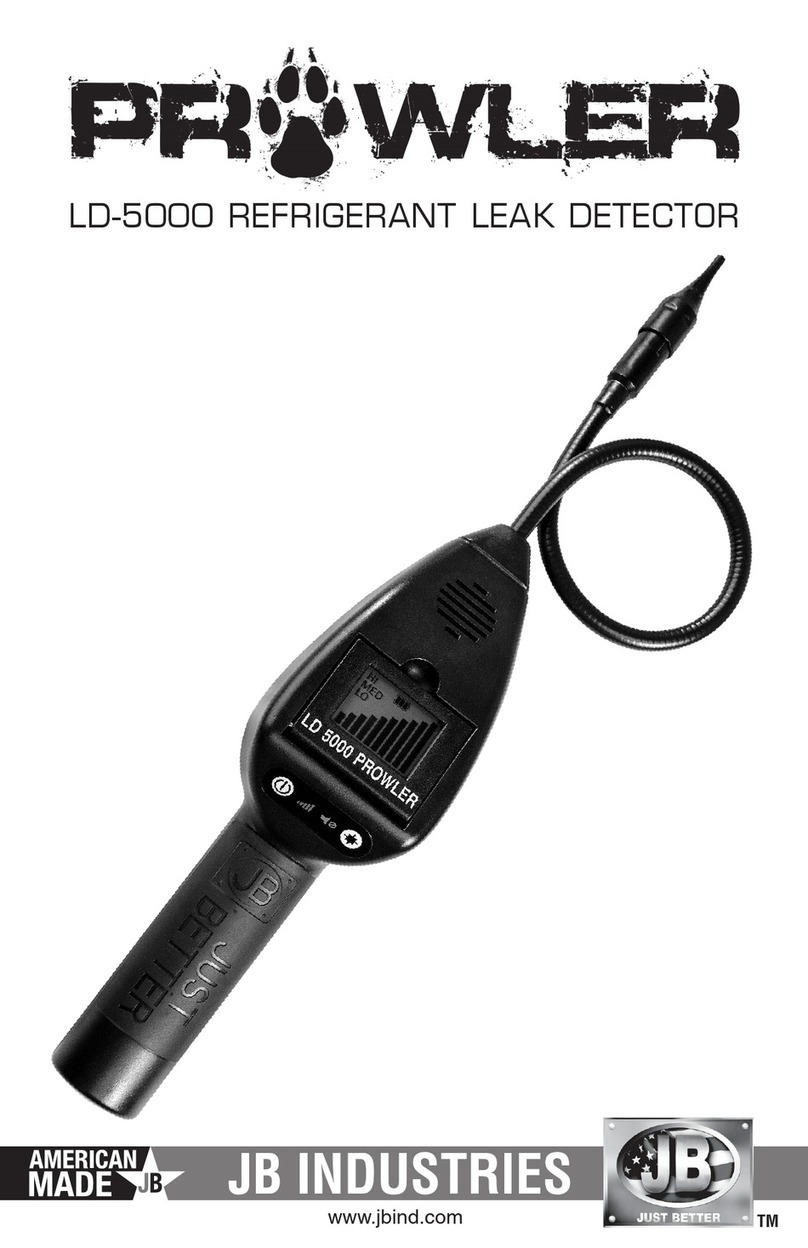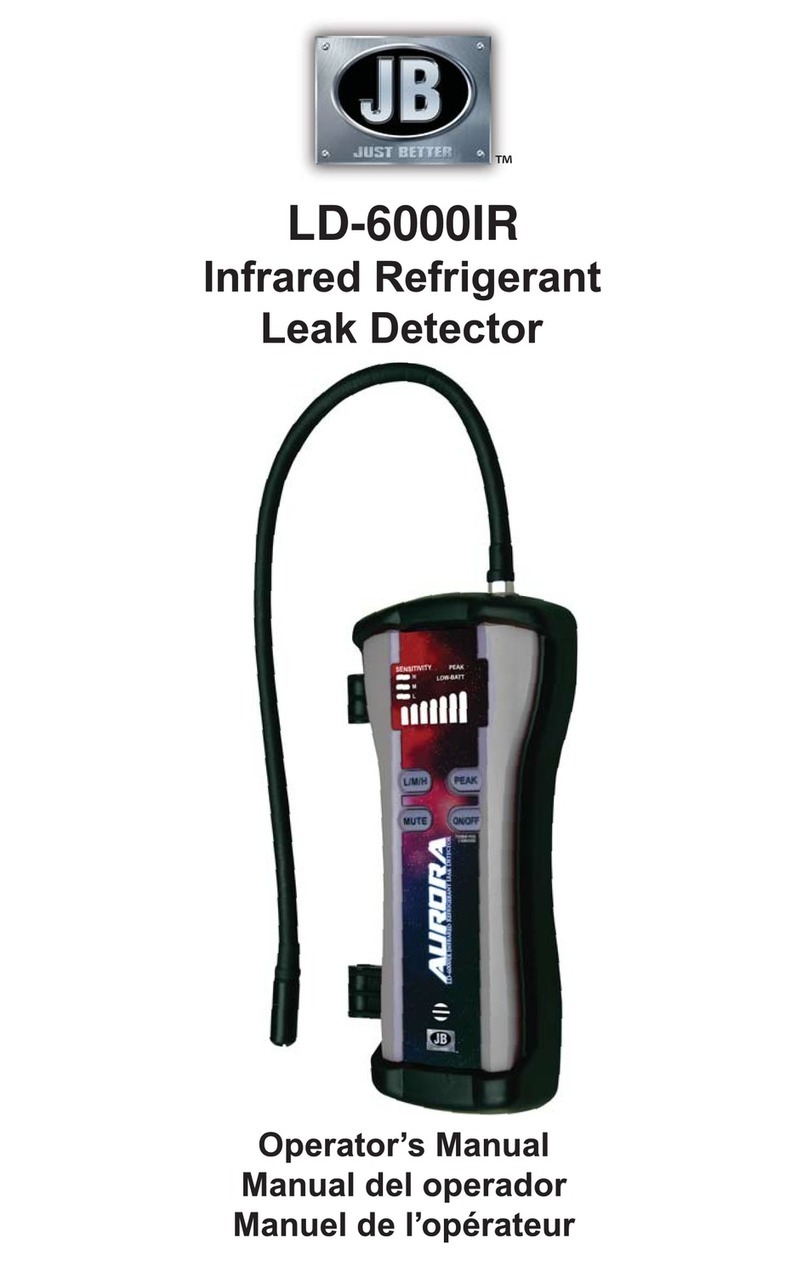
JB warranties your LD-2500 HUNTER Refrigerant Leak Detector to be
free from defects of materials or workmanship for two years from the date
of purchase. JB does not warrant items that deteriorate under normal
use, including power cells, sensors and filters. In addition, JB does not
warrant any instrument that has been subjected to misuse, negligence, or
accident, or has been repaired or altered by anyone other than JB.
JB’s liability is limited to instruments returned to JB, transportation pre-
paid, not later than thirty (30) days after the warranty period expire, and
which JB judges to have malfunctioned because of defective materials or
workmanship. JB’s liability is limited to, at its opinion, repairing or replac-
ing the defective instrument or part.
This warranty is in lieu of all other warranties, express or implied, whether
of merchantability or of fitness for a particular purpose or otherwise. All
such other warranties are expressly disclaimed. JB shall have no liability
in excess of the price paid to JB for the instrument plus return transporta-
tion charges prepaid. JB shall have no liability for any incidental or conse-
quential damages. All such liabilities are excluded.
Warranty and Liability
Special Information for Automotive Technicians
JB’s LD-2500 HUNTER Refrigerant Leak Detector is design certified by
MET Laboratories, Inc. to meet SAE J1627, “Rating Criteria for Electronic
Refrigerant Leak Detectors” for R12, R22, R134a. The following SAE Rec-
ommended Practice applies to this instrument and to the use of generally
available electronic leak detection methods to service motor vehicle pas-
senger compartment air conditioning systems.
1. The electronic leak detector shall be operated in accordance with the equipment manu-
facturer’s operating instructions.
2. Leak test with the engine not in operation.
3. The A/C system shall be charged with sufficient refrigerant to have a gauge pressure of
at least 50 PSI (340 kPA) when not in operation. At temperatures below 59F (15C)
leaks may not be measurable, since this pressure may not be reached.
4. Take care not to contaminate the detector probe tip if the part being tested is contami-
nated. If the part is particularly dirty, it should be wiped off with a dry shop towel or
blown off with shop air. No cleaners or solvents shall be used, since many electronic
detectors are sensitive to their ingredients.
5. Visually trace the entire refrigerant system, and look for signs of air conditioning lu-
bricant leakage, damage, and corrosion on all lines, hoses, and components. Each
questionable areas shall be carefully checked with the detector probe as well as all
fittings, hose-to-line couplings, refrigerant controls, service ports with caps in place,
brazed or welded areas, and areas around attachment points and hold-downs on lines
and components.
6. Always follow the refrigerant system around in a continuous path so that no areas of
potential leaks are missed. If a leak is found, always continue to test the remainder of
the system.



























